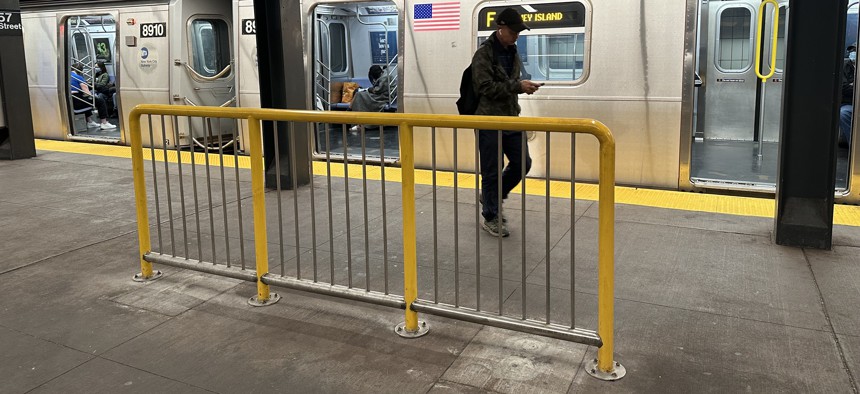News of grizzly attacks on subway riders has me seeking some type of barrier while waiting on subway platforms. I’ve been positioning myself behind platform pillars and information signs, sometimes holding on to them. I don’t really know that I’m that much safer, but at least I have the perception I am.
The Metropolitan Transportation Authority is trying a similar idea with a yellow metal barrier installed on the F line at the 57th Street station that people can stand behind, lean on or grab. Jamie Torres-Springer, the MTA’s president of construction and development, said at the agency’s board meeting in March that the barrier was “an opportunity for passengers to stand in a place where they feel safe,” and that other versions were being considered. It will be New York City Transit’s call on how and when more barriers will be used moving forward, he said.
The agency should embrace this simple option and roll it out swiftly. The barriers are a part of a pilot program started after the death of Michelle Go, who was killed in early 2022 when she was pushed by a mentally disturbed man into the path of an oncoming subway train in Manhattan’s Times Square station. More recently, a woman was injured and left paralyzed when she was shoved into the side of a moving train on May 21. A man living in a city shelter was charged with pushing the victim. The MTA argues these incidents are rare, despite extensive news coverage, and while barriers can’t guarantee they will prevent further tragedies, they offer a way to help calm nerves and more effectively than hiding behind a subway pillar.


